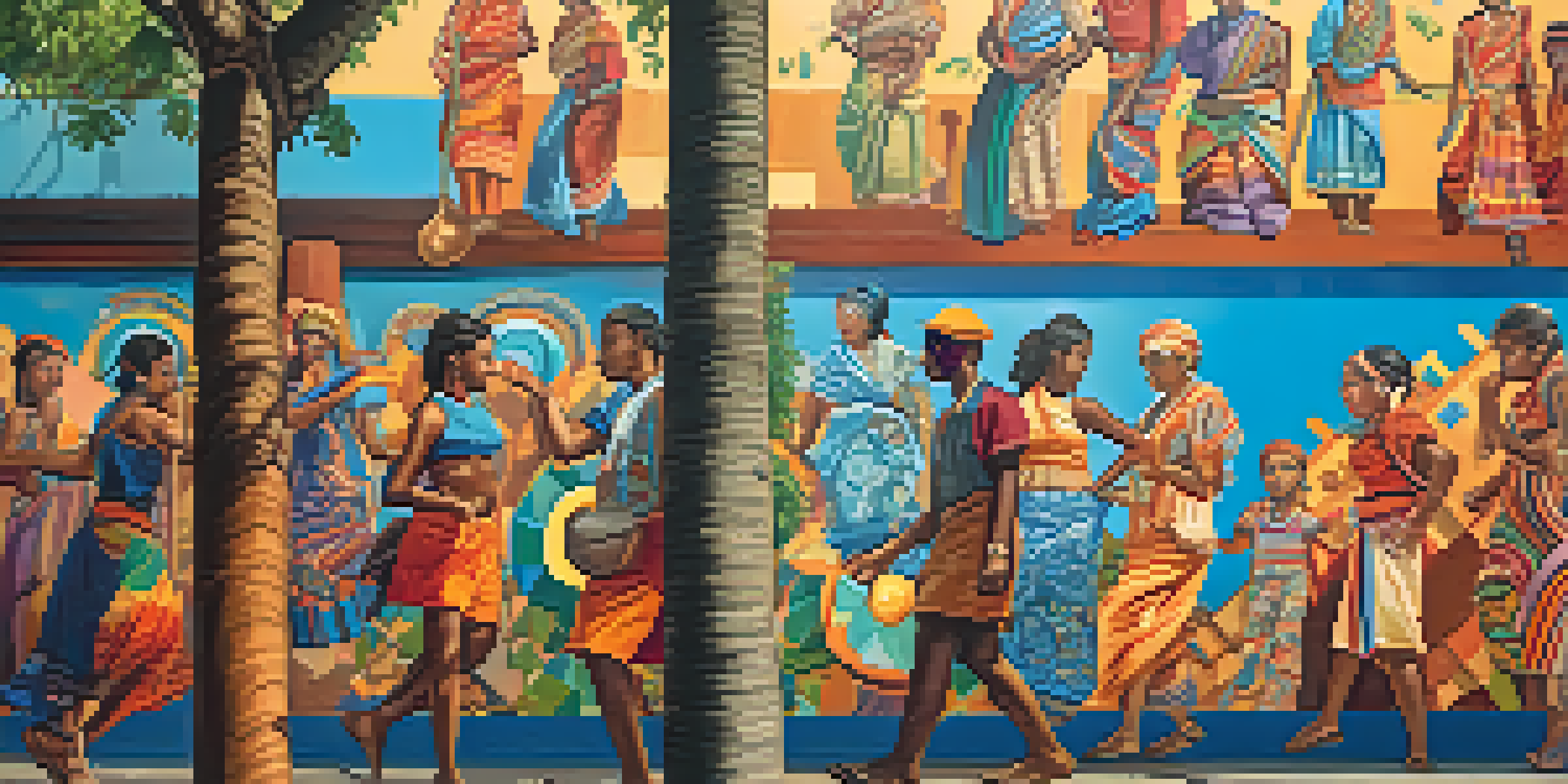Identity Politics: A Catalyst for Change in Art Movements

Understanding Identity Politics in Art
Identity politics refers to the way people's political interests are shaped by their social identities, such as race, gender, and sexuality. In the art world, this concept plays a crucial role in how artists express themselves and connect with their audiences. By highlighting their unique backgrounds and experiences, artists can challenge conventional narratives and foster deeper connections with viewers.
Historical Context: Art Movements and Identity
Throughout history, various art movements have emerged in response to social and political changes. For instance, the Harlem Renaissance celebrated African American culture and identity during the early 20th century. Similarly, the feminist art movement sought to address gender inequality by amplifying women's voices and experiences in the art community.
Identity Politics Shapes Art
Artists use their social identities to challenge conventional narratives and foster connections with audiences.
The Rise of Intersectionality in Art
Intersectionality is a concept that recognizes how different aspects of a person's identity can overlap and create unique experiences of oppression or privilege. In contemporary art, this framework has become increasingly relevant, as artists explore how factors like race, gender, and socioeconomic status intersect. By doing so, they create multifaceted narratives that resonate with diverse audiences.
Case Studies: Artists Shaping Identity Politics
Several artists have effectively used their platforms to address identity politics, such as Ai Weiwei, whose work critiques government oppression and human rights violations. Similarly, Frida Kahlo’s art often reflects her own struggles with identity, culture, and gender. These artists not only express their personal experiences but also inspire others to engage in conversations about social justice and identity.
Intersectionality Enriches Narratives
Contemporary artists explore overlapping identities to create multifaceted stories that resonate with diverse viewers.
Impact of Social Media on Artistic Expression
Social media has revolutionized how artists share their work and engage with their audiences. Platforms like Instagram allow for immediate feedback and community building, making it easier for artists to connect with like-minded individuals. This democratization of art has enabled diverse voices to emerge, ensuring that identity politics remains at the forefront of contemporary artistic discourse.
Challenges Faced by Identity-Driven Artists
While identity politics can empower artists, it also presents challenges, such as the risk of being pigeonholed into specific categories. Many artists worry that their work may be reduced to just their identity rather than appreciated for its artistic merit. Navigating these complexities can be daunting, but it also drives artists to innovate and push boundaries in their work.
Social Media Empowers Artists
Platforms like Instagram democratize art, allowing diverse voices to emerge and keep identity politics central in artistic discourse.
The Future of Identity Politics in Art
As society continues to evolve, so too will the discourse surrounding identity politics in art. Upcoming artists are likely to explore new dimensions of identity, including digital identities and global perspectives. This ongoing evolution promises to enrich the art world, making it more inclusive and reflective of our diverse society.
Conclusion: Art as a Mirror of Society
Ultimately, identity politics serves as a catalyst for change in art movements, prompting artists to explore and express their unique experiences. By engaging with these themes, artists not only reflect societal changes but also challenge viewers to reconsider their understanding of identity. As we move forward, it’s crucial to support and celebrate art that embraces diversity and fosters dialogue.